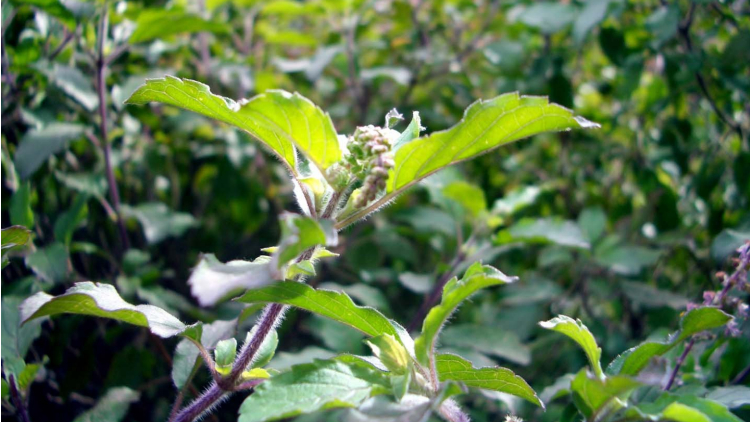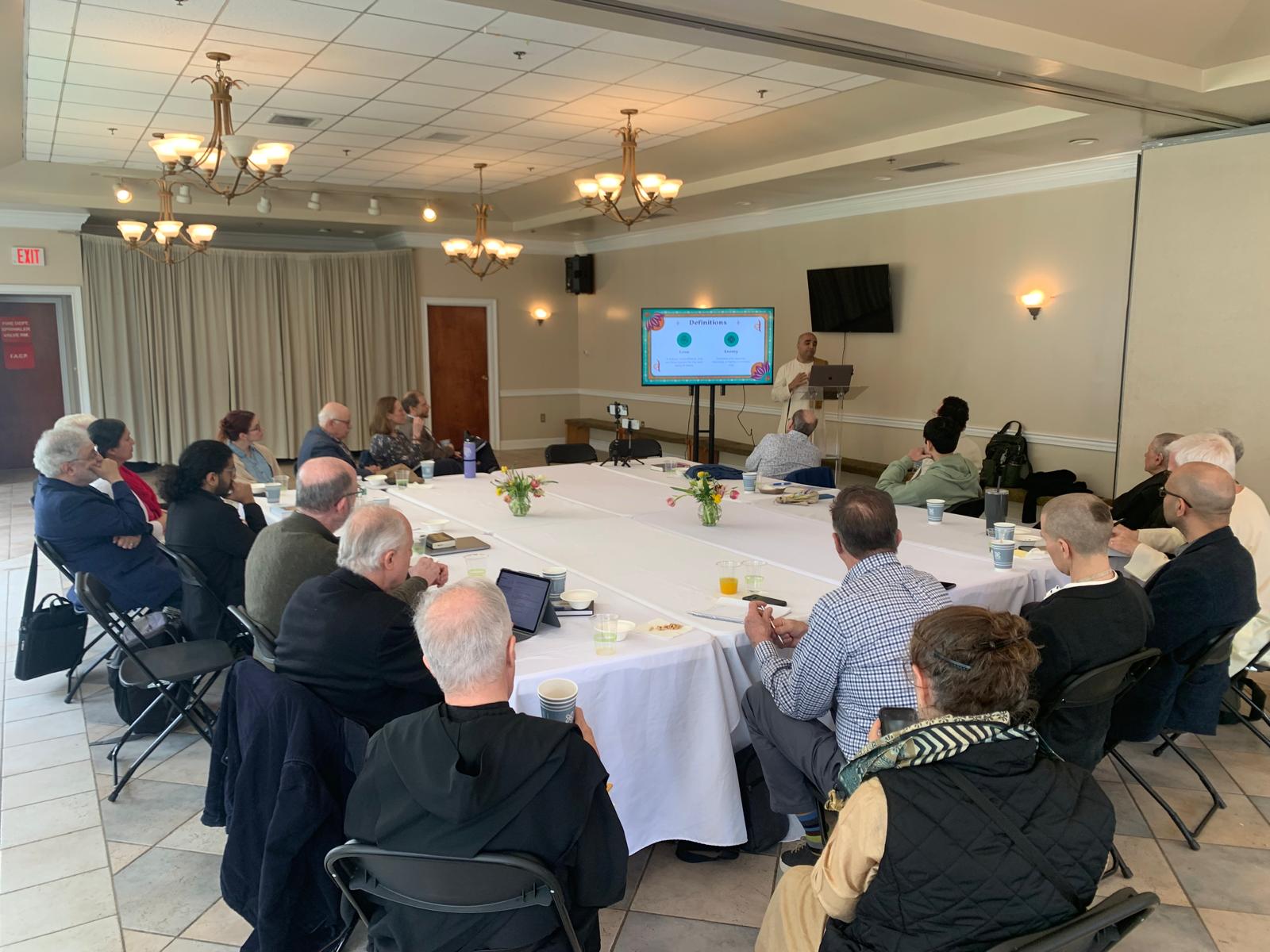Inmate Establishes Worship of Tulasi Devi in Prison
By Madhava Smullen | Oct 02, 2013

Bhakta Tim, a former inmate, was recently released from the Federal Correctional Institution in Rochester, Minnesota — but not before planting over thirty Tulasis and establishing worship of the sacred plant there.
Tim was first introduced to Krishna consciousness way back in 1973, while still a high school senior in Columbus, Ohio. He had always been stumped by the Christian notion that God condemns one to eternal damnation with no opportunity for rehabilitation. And he found solace and answers to his questions upon meeting an ISKCON devotee and receiving a copy of Back to Godhead magazine.
Tim immediately accepted Krishna as his Lord, and while he never officially joined ISKCON, he has practiced Krishna consciousness ever since.
His practice became a solace to him throughout his life, particularly while serving time at Federal Correctional Institutions in Coleman, Florida; Yazoo City, Mississippi; and Rochester, Minnesota from 2003 until his release in 2012.
“Now, I do not know or see anything other than Krishna,” Tim says. “The only real purpose worth pursuing in life is to experience wonderful Krishna. Life is characterized by a constant influx of change, but in the midst of the cacophony there is a changeless constant, Krishna. When this is realized everything else becomes insignificant and tolerable.”
Tim saw the so-called “free” life in the material world as a prison for those wanting to enjoy separately from Krishna. And he viewed his incarceration — “The prisonhouse within the prisonhouse”– as a special benediction from the Lord, giving him the opportunity to realize that he was not the controller or independent, but completely dependent on Krishna.
Throughout his time in prison, Tim practiced Krishna consciousness and gave it to others. He would formally celebrate Vaishnava festivals, conduct regular Bhagavad-gita classes, and distribute prasadam. Not so many participated; but still, out of a 900 to 1,200 inmate population, four to six became regulars at his Bhagavad-gita classes, and eight to eleven would attend celebrations where prasadam was handed out.
“Everyone was always welcome to come hear about Krishna,” Tim says. “Each was qualified. The approach was to simply speak nicely and allow Krishna to capture hearts. To be His instrument, but have no attachment to the result.”
With Tim’s sincerity and the support of ISKCON Prison Ministry, all the prisons he was transferred to over the years developed good Krishna conscious programs.
For example, FCC Coleman in Florida acquired a complete set of Srimad Bhagavatam, while FMC Rochester in Minnesota developed a Vaisnava library and monthly interactions with devotees. Wonderful things began to happen.
“At Rochester, we had a gentleman come who had been advised that he only had one year to live,” says Tim. “He would make his rounds to all the religious groups’ organized services. Like Blaise Pascal, apparently he thought it best to hedge his bets to eliminate any possibility of missing out on a bona-fide process.”
“lt was nice seeing his effort to get his hand properly situated within a bead bag to chant japa,” Tim continues. “He was so attentive, receptive and inquisitive. He passed away, but not before uttering the maha mantra. How merciful Krishna is!”
Of all the prisons he was transferred to, Yazoo City in Mississippi was perhaps the most pleasant experience for Tim. With a population of over 1,200, it housed many diverse religious groups. And Tim was given facilities to celebrate all the Vaishnava festivals, hold an annual book table event, and teach Nectar of Instruction to leaders of other faith groups.
He also engaged prison staff in producing flyers, providing facilities to prepare prasadam for ceremonial meals, and obtaining food from ISKCON centers for distribution.
The Yazoo City prison also had an extensive Vaishnava library, with the chaplain there spending $500 to $1,000 for Vaishnava books and paraphernalia.
It was also at Yazoo City that a number of developments took place that would inspire Tim’s introduction of the worship of Tulasi Devi in prison.
Tim began by embarking on his own personal worship of Tulasi Devi, the embodiment of one of Lord Krishna’s most beloved devotees.
“I simply followed the guidelines established by Srila Bhaktivinoda Thakur in his Bhajana-rahasya — a step-by-step process of worship that can be performed within the mind,” he says.
While worshipping Tulasi, Tim was fortunate enough to receive Tulasi leaves that had been offered to the feet of the Deity of Lord Krishna in New Talavana, Mississippi.
He then received a copy of the March/April 2006 issue of Back to Godhead magazine, featuring an in-depth article with many photos about worshipping Tulasi Devi at the ISKCON temple in Vancouver, Canada.

A BTG article on the Tulasi plants in Vancouver — some of the largest in ISKCON – inspired Tim to introduce worship in his prison
In the article was a statement from the Skanda Purana that struck him deeply: “Tulasi is auspicious in all respects. Simply by seeing, simply by touching, simply by remembering, simply by praying to, simply by bowing before, simply by hearing about or simply by sowing this tree, there is always auspiciousness. Anyone who comes in touch with the Tulasi tree in the abovementioned ways lives eternally in the Vaikuntha world.”
It wasn’t until Tim was at FMC Rochester in Minnesota, and about to leave the prison system, however, that this inspiration came into play.
Tim wanted to leave behind something that would continue to give Krishna’s mercy to the inmates. Thinking that wherever a pure devotee resides becomes a holy place, he contacted Bruce Gadden, an ISKCON Prison Ministry volunteer, and asked him to purchase Tulasi seeds and ship them to FMC Rochester.
With the seeds on their way, Tim then took a certificate program in horticulture which was made available when his prison’s education department partnered with a local college.
“This gave me access to the instructor,” he says. “I explained the situation to him. He already provided the chapel poinsettias at Christmas and Easter lilies at Easter, so it didn’t take much to enlist him to cultivate Tulasi. The opportunity to grow a new species was all that was necessary for complete greenhouse cooperation.”
Wanting the horticulture instructor to appreciate the religious significance of the endeavor, Tim also gave him the Back to Godhead issue containing the article on ISKCON Vancouver’s Tulasi plants.
The instructor read the article, found it very informative, and commented favorably on it. He then planted fifty Kapoor Tulasi seeds, from which seedlings sprouted within seven to ten days. Over thirty seedlings were potted.
“As this was mid-November, the plants had to be cultivated in the greenhouse,” says Tim. “The greenhouse is first class, with heating tables and pads, lighting, etc. The outside temperature was freezing and there was snow on the ground, so considerable care was taken to ensure Tulasi was maintained nicely within a temperature controlled environ.”
Propagation of the Tulasi plants became a regular class activity for horticulture students at the prison. Tim thought about how much mercy was being bestowed upon them as a result.
His own first opportunity to see Tulasi was after the plants had been propagated and potted.
“Upon seeing her, I welcomed her to FMC Rochester with folded hands and bowed head, hoping that her presence would manifest as Krishna’s desire to spread His causeless mercy,” he says.
This has, indeed, come to pass. Around half of the original Tulasis planted are still thriving at FMC Rochester, and regular worship of them has been established.
What’s more, devotees from the Friends of Krishna organization in Golden Valley, Minnesota, who visit the prison to conduct monthly devotional programs, comment that the growth of Tulasi Devi there exceeds that of the Tulasis they cultivate themselves.
Meanwhile, Tim, now out of the prison system, continues to worship Tulasi at home. And he continues to think of the inmates at FMC Rochester.
“By the causeless mercy of Sri Krishna and Srimati Tulasi Devi, many residents of FMC Rochester have the association of a pure devotee and all live within a holy tirtha,” he says.
He adds, “Currently there is a twenty-year-old hibiscus that is the lobby centerpiece in the mental health unit. My hope is that Tulasi will eventually replace that hibiscus, giving all that see her passage to Vaikuntha. Krishna’s desire is that all living entities return home, back to Godhead.”












